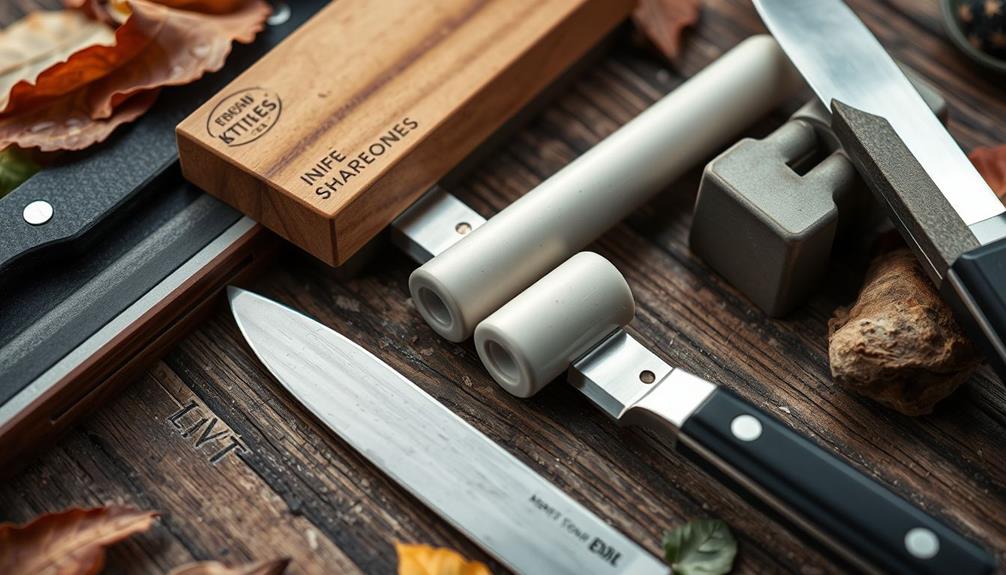Stock up on essential supplies for your preppers stockpile to guarantee readiness. Include water filtration systems, food like rice and beans, medical supplies such as bandages and medications, emergency lighting like solar lights, and pest control items for protection. Equip yourself with outdoor gear like tents and knives for survival scenarios. Having these items ready can make a significant difference in challenging situations.
Key Takeaways
- Ensure water filtration systems for clean water.
- Stockpile rice, beans, and canned goods for food.
- Include medical supplies like bandages and medications.
- Invest in battery-operated or solar lights for emergencies.
- Use airtight containers for pest-proof food storage.
Essential Water Stockpile
When preparing your preppers stockpile, make sure you have an essential water stockpile ready for emergencies. Water is a fundamental necessity for survival, with experts recommending at least 1 gallon per person per day.
Investing in water filtration systems is pivotal to guarantee access to clean water during crises. Additionally, considering alternative water sources such as rainwater harvesting or wells can provide long-term water storage solutions.
Properly stored water is crucial for sustaining life in emergency situations, making it imperative to have a reliable water stockpile.
Water filtration systems play a key role in purifying water for consumption, removing harmful contaminants and pathogens. Alternative water sources offer backup options in case of limited access to clean water from traditional sources.
Long-term water storage solutions are essential for ensuring a continuous supply of water during extended emergencies. By incorporating these strategies into your prepping efforts, you can better prepare yourself and your loved ones for unforeseen disasters.
Food Storage Must-Haves

When preparing your food storage must-haves, consider stocking up on essential pantry items like:
- rice
- beans
- canned goods
for a well-rounded emergency supply. Guarantee you incorporate long-term food options that can sustain your family for extended periods, and remember to rotate your supplies regularly to maintain freshness.
Having a diverse selection of non-perishable foods and a manual can opener on hand will help you stay prepared for any situation that may arise.
Essential Pantry Items
To build a well-rounded food storage pantry, focus on stocking up on essential pantry items that are non-perishable and long-lasting. Include canned goods, dried beans, rice, and pasta for immediate consumption in emergency situations.
Don't forget to add freeze-dried fruits, vegetables, meats, and grains for extended survival scenarios where fresh produce is unavailable. Essential cooking supplies like oils, spices, and seasonings will enhance the flavor of your emergency meals.
Remember to include nutritional supplements, vitamins, and minerals to maintain health when food options are limited. Toilet paper is also an important item to have in your emergency supplies, ensuring hygiene even if you need to leave your home.
When stocking your pantry, consider any special dietary needs or preferences of your household members to make sure everyone's requirements are met during challenging times.
Long-Term Food Options
Long-Term food options for preppers encompass essential items that are crucial for building a sustainable and diverse food storage supply. When preparing for potential emergencies, make sure to take into account the following:
- Dehydrated and Freeze-Dried Foods: These long-lasting options can stay edible for up to 25 years, providing a reliable source of nutrition during extended periods of need.
- Staple Foods with Long Shelf Lives: Stock up on items like rice, beans, pasta, and canned goods that have extended shelf lives and can serve as the foundation for various meals.
- Nutrient-Dense Additions: In addition to basic staples, make sure to include nutrient-dense foods such as powdered milk, protein powder, and vitamin supplements to guarantee a well-rounded diet even in emergency situations.
Rotating Supplies Regularly
How can you guarantee the freshness and safety of your food stockpile for emergencies?
To maintain a reliable food supply, it's vital to rotate your stored food regularly. By checking expiration dates and replacing expired items, you can make sure that your emergency food remains safe to consume. Proper rotation not only prevents waste but also helps you avoid consuming spoiled or degraded food during critical times.
Keeping track of your inventory and consumption patterns enables you to plan and restock your supplies efficiently. Establishing a systematic approach to rotating your food stockpile streamlines the process, making it easier to manage and ensuring that your supplies are always up to date.
Medical Supplies Checklist

Including essential items like adhesive bandages, gauze pads, and antiseptic wipes is important in your medical supplies checklist. These items are fundamental for addressing minor cuts, scrapes, and wounds effectively.
Alongside these basics, consider adding a thermometer, scissors, and tweezers to cater to various basic medical needs. Additionally, having over-the-counter pain relievers and any necessary prescription medications on hand can prove invaluable during emergencies.
Remember to customize your first aid kit based on your family's unique medical requirements and size to ensure thorough coverage. It's significant to regularly check and refresh your medical supplies to guarantee they're up to date and ready to use when needed.
Emergency Lighting Options

To guarantee you're well-prepared for emergencies, it's essential to have reliable emergency lighting options available. Invest in battery-operated or solar lights as they're dependable sources of light during power outages.
In addition, keep a supply of batteries, candles, and oil lamps for alternative lighting sources. Make sure you have enough fuel for portable heaters and stoves in case of prolonged power loss. Propane tanks should be filled and ready for emergency cooking needs.
Consider alternative cooking methods such as grills or camp stoves, and have necessary fuel containers on hand. Having a variety of emergency lighting options ensures that you can navigate your surroundings safely and comfortably during unexpected situations.
Make it a priority to check and maintain these lighting sources regularly to ensure they're functional and ready for use when needed.
Pest Control Essentials

When preparing your stockpile, don't forget about essential pest control items like rodent-proof food storage containers and effective bug repellents. These tools are vital in keeping your supplies safe from contamination and protecting yourself from insect bites.
Rodent-Proof Food Storage
For effective pest control in your preppers stockpile, prioritize rodent-proof food storage by utilizing airtight containers and proper sanitation practices.
When storing food, opt for metal or glass containers with tight-fitting lids to deter rodents from contaminating your supplies. Additionally, placing traps and rodent repellents around your food storage area can help keep pests at bay.
Regularly inspect the storage space for any signs of rodent activity, such as droppings or gnaw marks, and take immediate action to prevent infestations. Implementing proper sanitation practices, like cleaning up spills promptly and storing food off the ground, can also minimize attractants for rodents near your stockpile.
Bug Repellent Strategies
Prioritize your comfort and safety by implementing effective bug repellent strategies as part of your pest control essentials.
Stock up on mosquito coils, repellents, and afterbite sticks to safeguard against insect bites during outdoor activities.
Utilize roach traps, mouse traps, and ant traps for efficient pest control in your home or bugout location.
Make sure to have an ample supply of rope for various outdoor needs, such as setting up shelters or securing items.
Having essential bug repellent items readily available is essential for preventing insect-borne diseases and discomfort in emergency situations.
A well-prepared pest control plan can greatly enhance your overall comfort and safety during survival scenarios.
By being proactive in managing bugs and pests, you can create a more secure and pleasant environment for yourself and your loved ones.
Outdoor Gear and Tools

Make sure your preppers stockpile includes essential outdoor gear and tools for survival situations and emergencies. When preparing for outdoor adventures or unexpected events, having the right equipment can make a significant difference.
Here are some key items to contemplate adding to your stockpile:
- Outdoor Gear: Tents, sleeping bags, backpacks, and portable stoves are vital for shelter, warmth, and food preparation in survival scenarios.
- Tools: Knives, multi-tools, axes, and saws are indispensable for various outdoor tasks like cutting wood, building shelters, and making repairs.
- Lighting Equipment: A reliable flashlight, headlamp, and lantern are essential for visibility during nighttime activities or power outages, ensuring you can navigate safely in the dark.
Frequently Asked Questions
What Supplies Do Preppers Need?
You need supplies like food, water, first aid items, and tools for emergencies. Consider family feeding strategies and personal security. Long-term water storage is vital. Bugout bags with survival gear are essential for evacuations.
What Does a Doomsday Prepper Need?
To be ready for any doomsday scenario, you need essentials like food, water, shelter, and security. Long-term water storage, bugout bags, survival supplies, first aid items, and unique personal needs are essential. Acquire knowledge and skills to stay prepared.
What Are the Top 10 Survival Foods?
To survive, stock up on canned beans, rice, oats, peanut butter, and dried fruits. These foods provide long-lasting energy and essential nutrients. Remember, in emergencies, having these top 10 survival foods readily available can make all the difference.
What Is the Best Food to Stockpile Long Term?
For long-term stockpiling, prioritize foods like dehydrated fruits, vegetables, and meats. Don't forget about freeze-dried meals, canned goods, grains like rice, and high-calorie items such as nuts. Rotate stockpile items for freshness and readiness.
What Should I Include in My Preppers Stockpile to Be Fully Prepared?
When building your preppers essentials list, consider including non-perishable food items like canned goods, rice, and pasta. Stock up on water, first aid supplies, and a reliable communication device. Don’t forget to add a multi-tool, flashlight, and extra batteries to your stockpile to be fully prepared for any emergency situation.
Conclusion
In summary, being well-prepared with a well-stocked pantry and essential supplies is vital for any prepper. By having a reliable water source, long-lasting food items, medical supplies, emergency lighting, pest control options, and outdoor gear, you can guarantee your safety and survival in any situation.
Remember, being proactive in your preparations can make all the difference when faced with unexpected challenges. Stay informed, stay equipped, and stay ready for anything that may come your way.










